There are a couple reasons Colombia’s Chocó Department remains the least visited area of the country. One of these has to do with its location. In the south of Colombia, Chocó stretches 400km (250 miles) west from the Cordillera Occidental to the port city of Buenaventura and the Pacific Coast. The coastline continues north over 1,400km (870 miles) from the Valle de Cauca to Panama. In this northern region you’ll find the only break in the 48,000km (29,825-mile) -long Pan-American Highway. From Alaska to Tierra del Fuego, the only place where this network of highways doesn’t exist is in what’s known as the Darién Gap, a 160km (100-mile) -long rainforest area in southern Panama’s Darién Province. Construction has been impeded here due to the fact that this area of the department receives a staggering yearly rainfall of some 3,000mm (118ins). Where this area meets Colombia is where the Chocó begins.
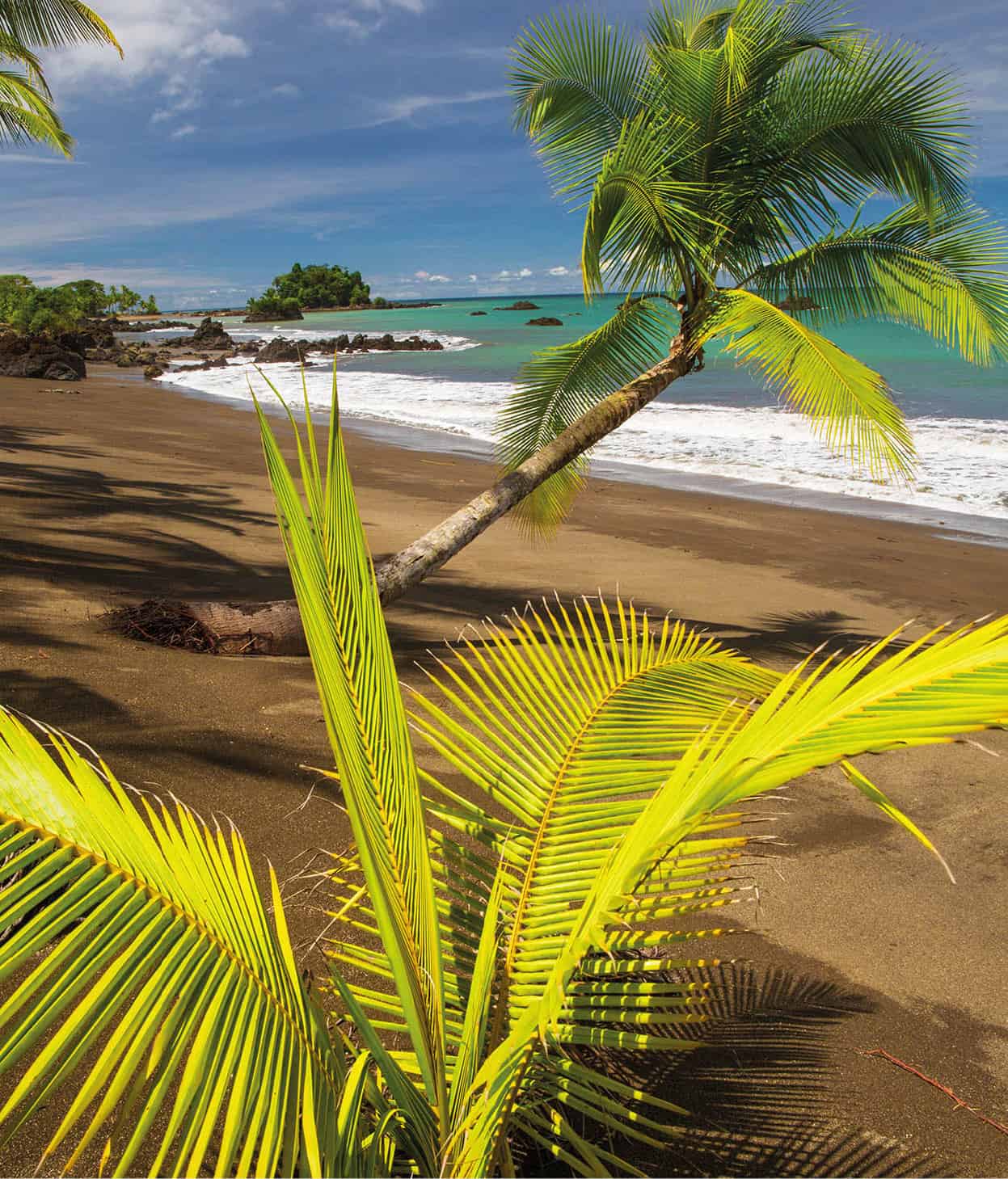
Beachat Nuquí.
SuperStock
Chocó’s checkered past and tragic present
The other reason Chocó isn’t more popular is to do with crime. In the 1990s and 2000s, when the rebel groups were forced out of the cities by Colombia’s military, they fled to the remotest parts of Amazonas: the Llanos and Chocó. These areas appealed to rebel groups who wanted to continue their cocaine production operations in little-developed areas with a negligible or non-existent military presence. The guerrillas therefore settled near to trafficking routes and under cover of dense rainforests. In doing so they seized land from local campesinos, poverty-stricken families and other residents of these areas, forcing the mass migrations that continue to plague the country.
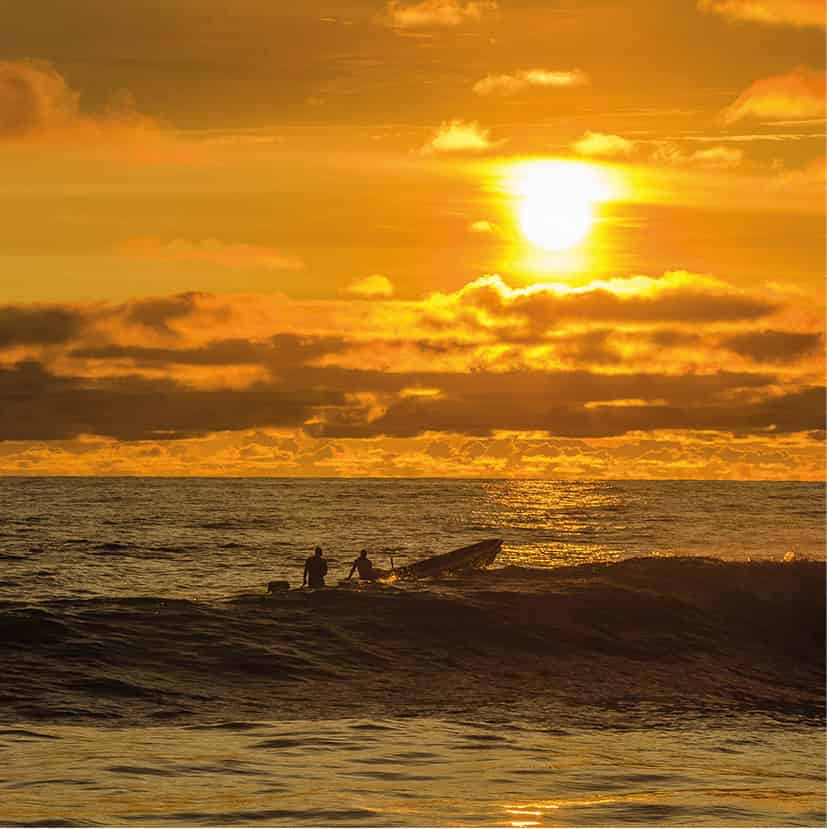
Fishermen near Utria National Park.
Alamy
Today, Colombia’s refugee crisis is of harrowing proportions. Out of all the countries in the world, Colombia is believed to have the second-most internally displaced persons (IDP). Since 2014, nearly six million people have been registered with the government as having been internally displaced. These are predominately the poorest people from the poorest parts of the country, many of whom are Afro-Colombians from the Chocó Department, a region where over 65% of the people live well below the poverty line. So long as Colombia is at war with rebel groups, the country will always have a refugee problem.
In the last few years the Chocó Department has been the staging ground of the kidnapping of a Colombian General by FARC rebels, an armed attack by National Liberation Army (ELN) that forced the closure of the road between Medellín and Quibdó, and, in 2014, the kidnapping by ELN rebels of a Dutch man, who was released one year later. Until recently Buenaventura, Colombia’s southern Pacific port city, was ranked as the most dangerous and violent in the nation.
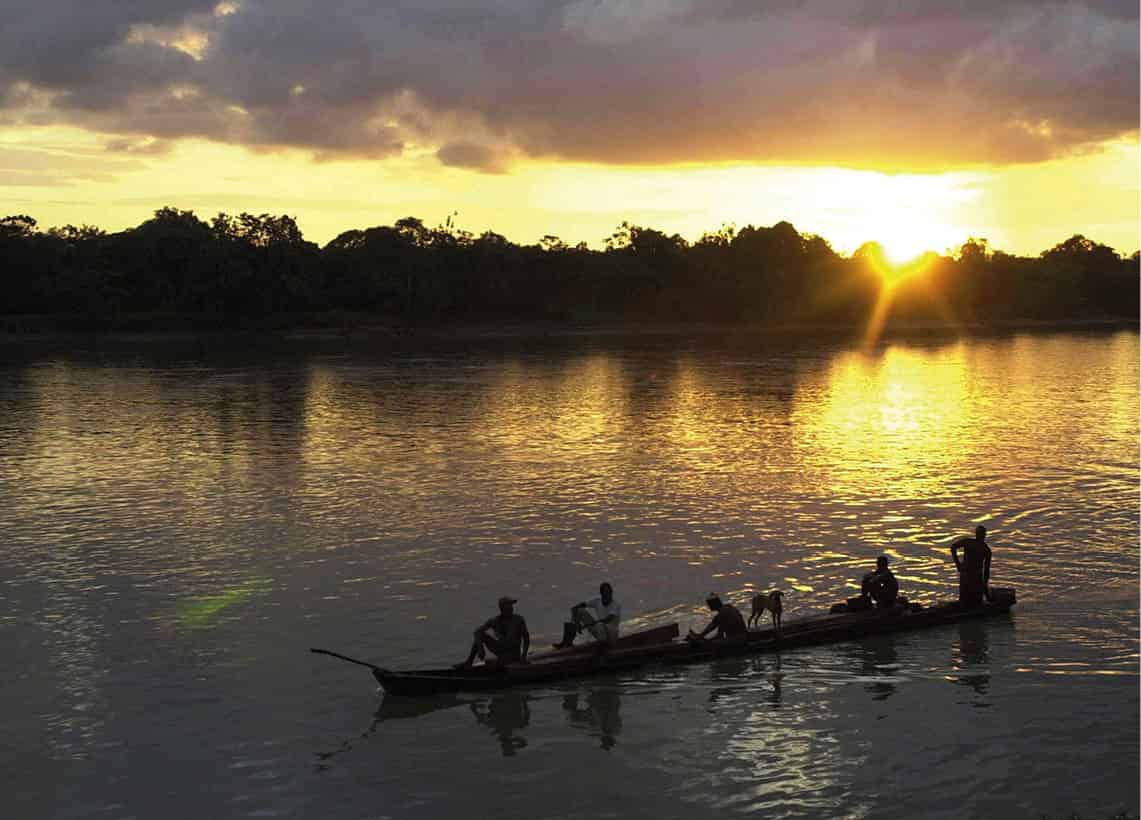
A canoe on the Atrato River.
Sipa Press/REX/Shutterstock
Looking to the future
However, Chocó’s violent past and present economic problems are no reason to bypass this section of the country entirely. Tourism is indeed on the upswing here. Buenaventura has been rebounding due to an infusion of cash and soldiers from the Santos government, and international investors are looking to open it up to trade with Asia and the United States. Continuing peace talks between the rebels and officials mean that Colombia might just be able to stem the refugee problem in the near future. Also, the Chocó’s remoteness – only two roads exist in Chocó, and there is still no paved roadway from Medellín to Quibdó – means you will doubtless find untouched landscapes and idyllic hidden beaches.
The nature here is just as stunning as any other place in Colombia. In the northern Chocó are the Serranía de los Saltos and Serrania del Baudó mountain ranges. These majestic monoliths seem to rise straight out of the Pacific Ocean, reaching heights of some 500 meters (1,640ft). Cutting through the tropical green rainforest that blankets their surface are a number of cascading white waterfalls, the sight of which will transport you to a lost world. Whale watching is one of the principal tourist activities here, and you’ll want to be in Nuquí during the June to October season, when it’s not uncommon to see pods of humpback whales breach the jade waters off Colombia’s Pacific Coast.
The wetness of Chocó
If you travel up to the municipality of Lloró, in the Chocó Department, at the border of Panama, you will arrive in a place that holds the record for Highest Average Annual Precipitation, with a massive 13,300mm (523.6ins) per year. According to the 2012 World Almanac, that officially makes Lloró the wettest place on earth. Such high levels of precipitation and heavy rains often results in flooding, landslides, and overflowing rivers, which displaces entire communities and even causes deaths.
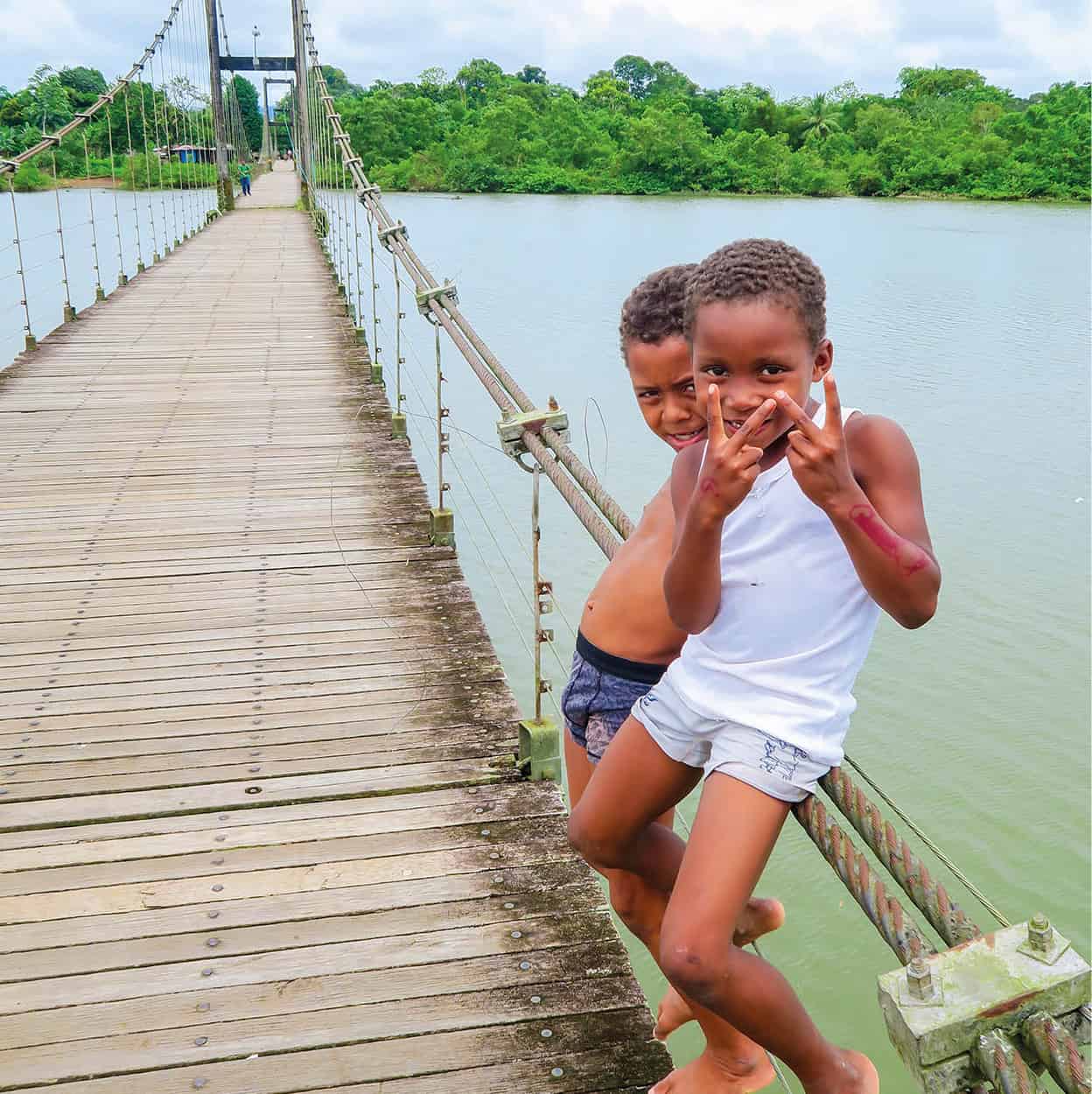
Young boys in Bahía Solano.
Getty Images
Safety considerations
Despite Chocó’s status as being a region that is ever opening up to tourism, it’s always wise to exercise caution. Check with local authorities before venturing either to Buenaventura or Quibdó to check on the current situation. Other good resources include the UK’s Colombia travel advice section of the foreign travel information page (www.gov.uk), and www.visitchoco.com, which is run by the Chocó Community Tourism Alliance.
Transportation within Chocó and getting your bearings
As it stands, the only road services in the Chocó exist from Medellín to Quibdó. The bus company Rapido Ochoa (tel: 574-444-8888; www.rapidoochoa.com) runs a service from Medellín to Quibdó for around US$25 and the journey takes about 7 hours. However, portions of the road leading into Chocó are unpaved, which makes for an arduous and uncomfortable journey. Instead, it is recommended to fly from Medellín to Quibdó. Satena (tel: 571-605 2222; www.satena.com) and Aerolineas Antioquia (www.ada-aero.com) offer one-way tickets for around US$60. You can then connect onward to Nuquí (around US$40), or Bahía Solano (US$60) with Satena. There are also direct flights from Medellín to Nuquí and Bahía Solano for around US$80–100 with Satena, and direct flights from Medellín to Bahía Solano for around US$80–100 with Aerolineas de Antioquia.
Within Chocó overland routes are practically non-existent. Infrastructure projects aim to connect Quibdó to Nuquí and the port town of Tribugá by road and eventually train. However, these developments seem to be moving at a glacial pace, which is almost understandable when you take environmental conditions and funding obstacles into account. There’s no telling when a road linking Quibdó to Nuquí might finally be finished. Instead transportation around the various coastal destinations in Chocó is usually done by water. Boats between Nuquí and El Valle run on Monday and Friday and cost about US$23 for the round trip.
It is possible to make the three-day overland trek through the jungle from Quibdó to the coast. However, due to safety concerns this is not recommended. In 2013 a former governor of Quibdó was kidnapped by guerrillas just outside the city, so the risks are very real. That said, upon arrival at the coast you can move freely back and forth between towns via water taxi with few security concerns. ATMs and currency exchange houses are a rarity here, so it’s best to stockpile some pesos before you arrive in Chocó.
Tip
The road from Medellín to Quibdó is rough and unpaved for the most part. It is wise to take a flight from Medellín to Chocó.
Quibdó
Critics of Quibdó 1 [map] make a persuasive argument when they rattle off the reasons not to visit Chocó’s capital city. There’s no thundering Zona Rosa, like in Medellín’s Poblado neighborhood, or hilly colonial enclave like Bogotá’s La Candelaria or Cali’s San Antonio. If you’re lucky you might find a small number of foreign travelers, but most of the few extranjero faces you’re likely to see belong to volunteers or aid workers. You’ll certainly be treated to a noticeable military presence when you arrive, as Quibdó is the typical embarkation point for anti-narco operations in the area.
However, to write off Quibdó altogether would be a mistake. Its location on the banks of the Río Atrato is pleasant, and the Catedral San Francisco de Asis (Carrera 2, no. 24a–32), which overlooks the water, is as striking as any other colonial church in the country. Its long, grey, sturdy exterior with twin towers and tall side galleries make it elegant and fortress-like all at once. Inside the church is very stately, with large white columns lining a long nave that leads to a pulpit sitting at the base of an impressive dome. This church acts as both a religious and cultural touchstone for the city – it’s the start point for the famous Fiesta de San Pacho.
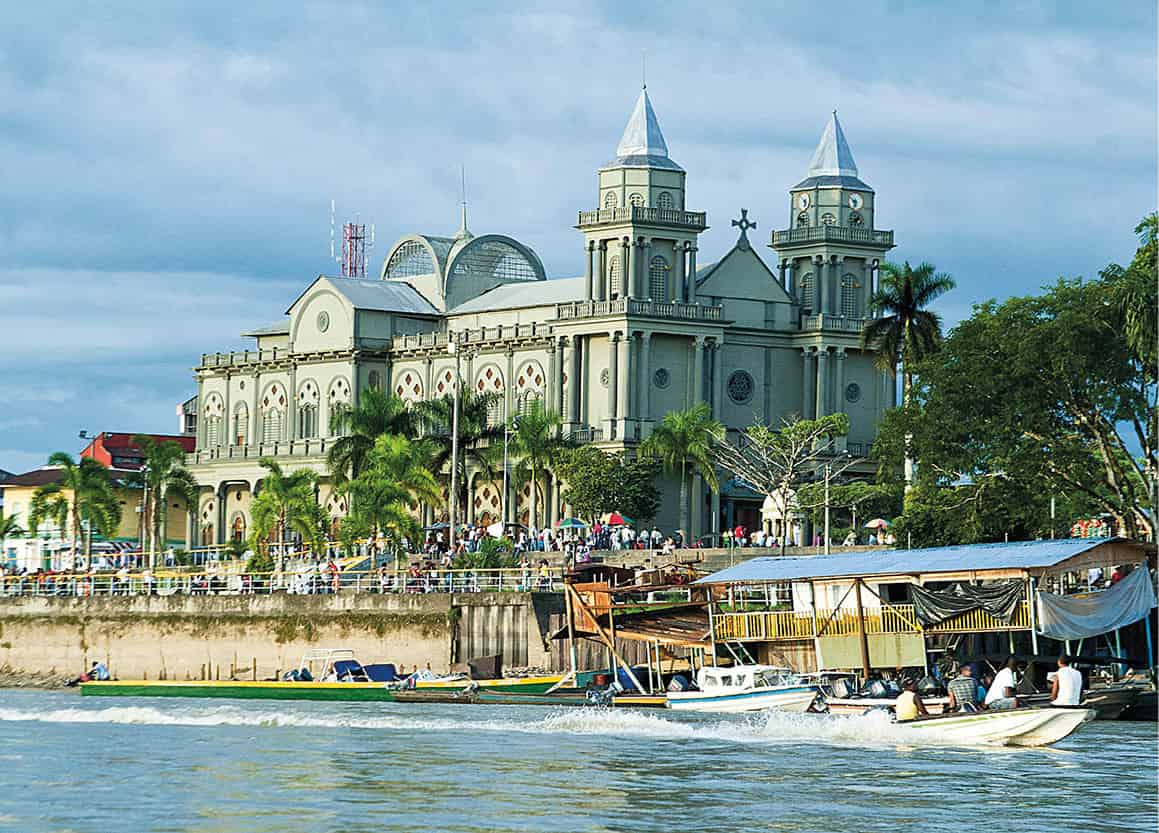
Quibdó’s cathedral.
Alamy
Then there’s the Malecón, the waterfront promenade running along the edge of the river. At dusk, the birds return from their day’s exploits for a good night’s rest, and the locals come out here to take in the sunsets over the water. There’s an expansive public space just below the church where you can enjoy sunsets, and this area often hosts outdoor concerts during festivals.
There’s definitely something to be said for stepping out of your comfort zone and into an area mostly free of tourism. In Quibdó you’ll find the locals to be warm and curious, eager to know more about you and your reasons for visiting their tragic, beautiful region. Of course Quibdó is also the transfer point from the rest of Colombia to Nuquí or Bahía Solano on the Pacific Coast. If you’re not taking a direct flight to Nuquí or Bahía Solano, then you’ll likely be flying from Quibdó.
The Festival of Saint Francis of Assisi (Fiesta de San Pacho)
What’s true for most of Colombia is true for even the most deprived parts of the nation: Colombians love a good party. Every year, the residents of Quibdó have a huge celebration, starting September 3. The Catedral San Francisco kicks off the month-long festivities with a Catholic opening mass. However, despite the influence of Rome, this is as much a celebration of Afro-Colombian roots and the religious heritage that comes with it.
After mass the church band kicks things into a higher gear with a performance of traditional chirimía music. It’s a rollicking, get-up-and-move folk genre that features instruments from around the globe. These include horns, the tambora (two-headed drum made from local trees), and European cymbals. The result is a versatile kind of music that has absorbed many influences over the years, including versions of the polka and the Spanish Jota, and there are even hints of big band and Mardi Gras-style jazz. This music is constantly evolving with the people, and as for the singing, it often features plenty of African-inspired vocals. All of these influences combine to form something truly unique to the region. However, once the party leaves the church, and the musicians take to the street, and San Pacho becomes one giant party unrivalled anywhere, save for the great carnivals of the world.
Of course it wouldn’t be a carnival without parade processions featuring dancers clad in colorful and elaborate costumes. During the month of San Pacho, each of Quibdó’s 12 districts holds a mass in the morning followed by processions of dancers, musicians, and themed floats. On the morning of September 3, for example, locals bring an image of a patron saint down to the banks of the Río Atrato and sing hymns. The afternoon’s processions mark the symbolic journey of the saint. Every neighborhood takes part, and as in New Orleans or Brazil, local artists and artisans design the floats, decorations, and costumes while the younger generation learn the craft at their feet. Its then up to committees formed in various neighborhoods to organize events of San Pacho and promote the city’s cultural heritage. The result is one big month-long party where everyone plays a role and everyone carouses until they can carouse no longer.
There are many reasons the Fiesta de San Pacho takes place every year, including heritage and tradition. Perhaps the occasion is stronger now more than ever for the simple reason that, in the face of great tragedy, loss and deprivation, there’s nothing more cathartic than giving over to wild exuberance and musical expression as a way to reaffirm the beauty of life.
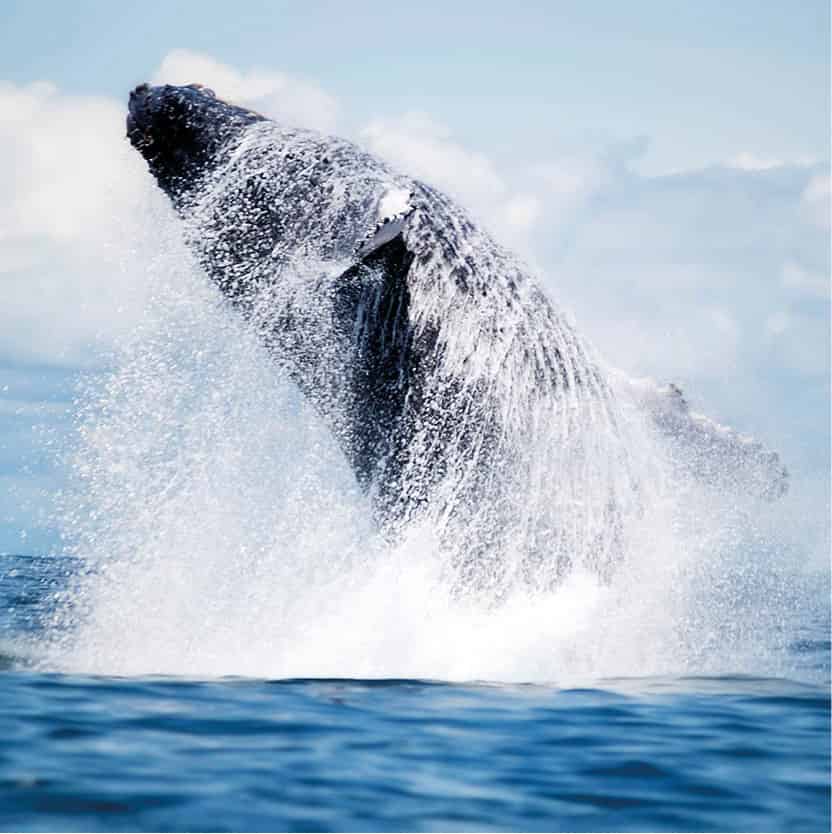
Whale breaching the waters off Gorgona Island.
iStock
Nuquí
Many travelers who come to Chocó will likely be heading to Nuquí 2 [map], before possibly continuing to Bahía Solano. That’s because, aside from the Parque Nacional Natural Utría, Nuquí is one of the best places to spot humpback whales on the entire Pacific Coast. As a town, though, it will likely leave many visitors feeling underwhelmed, with just an airstrip where the flights arrive and a couple of stores. Most people will simply be passing through, headed for the famous Pacific Coast eco-lodges to the north and south of the town.
The fact that these lodging options are thriving is proof positive that the Chocó’s safety reputation is improving, leading to at least minor gains in tourism. Many locals, in fact, would say that the gains are more than minor. There are various sustainable tourism initiatives in this area, and many of the employees report that during whale-watching season (from June to October) the areas of Nuquí, Bahía Solano, and the Utría Natural Park see up to a 50% increase in tourism.
Of course this leads to higher prices, and visitors who touch down in Nuquí and want to stay at one of the award-winning eco-lodges are going to a high price for the pleasure. Package tours can run well over US$500 for just a few nights’ stay, and backpackers looking for budget options will likely be disappointed when they can’t find a room for less than US$50 per night. Still, visitors can take solace in the fact their hard-earned dollars are not just going toward a great eco-tourism experience, but are helping to lift up local workers whose towns have been ravaged by deprivation and narco violence.
There’s also reason to hope that the future interconnectivity of Nuquí to mainland Chocó could lead to lower prices in the future. The road and train project connecting the Pacific town to Quibdó and the port of Tribugá is still ongoing, and when it’s completed, transportation, food, and lodging prices could be more attractive to the budget traveler.
Tip
One of the most popular tourist attractions in Chocó is whale watching. The season is relatively short, and only lasts from June through October, so be sure to make your arrangements during these times.
Parque Nacional Natural Utría
Between Bahía Solano and Nuquí you’ll find the Parque Nacional Natural Utria 3 [map] (boat from El Valle or Nuquí costs around US$25 return, reserve transportation at your hotel or eco-lodge). The park encompasses a portion of Chocó that is highly representative of the area’s rich biodiversity, which is the key reason the park was created in 1987. It comprises some 54,000 hectares (133,437 acres) and preserves several aquatic and land species of animal. At the south end of the park visitors will find mountain walls descending at steep angles right into the ocean, and when viewed through the mist, the beauty of these mountains, carpeted as they are in a bright green rug, becomes even more enigmatic.
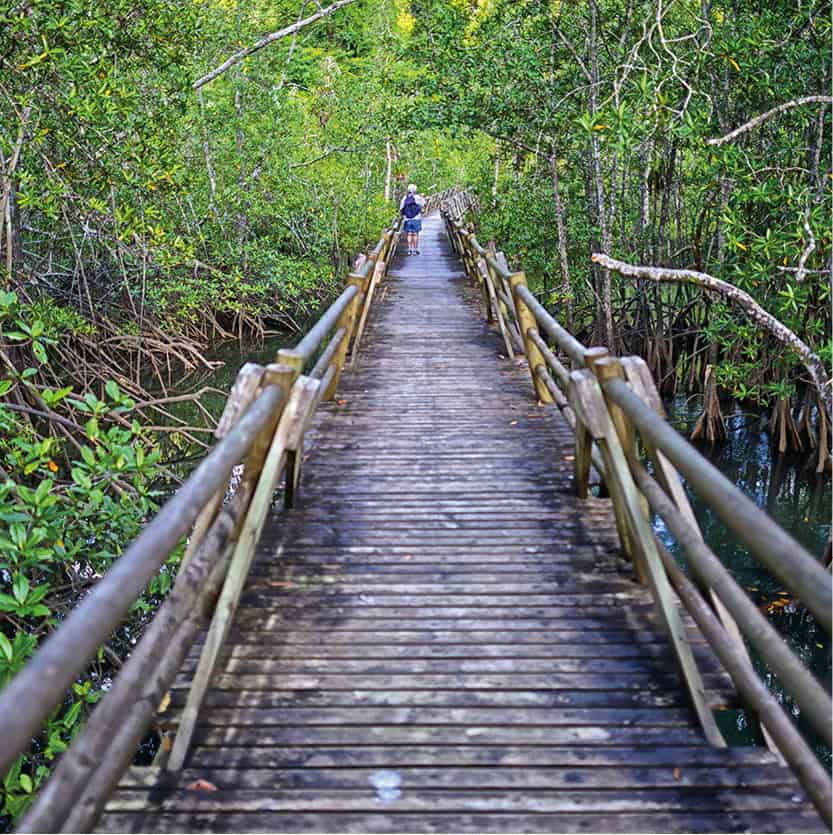
Utría National Park.
SuperStock
To the north is the ensenada (inlet) that is home to most of tourist activity in the park. There’s an abundance of marine life that likes to congregate here, including two different types of whales as well as migratory turtles and many species of bird. However, the real stars here are the whales, and this is one of the prime viewing areas to catch a glimpse of these migrating animals as they move just offshore of Colombia’s coast. To the locals, the arrival of the whales means good luck – and there are few better places to experience this luck than in the Parque Nacional Natural Utria.
About halfway up the inlet you’ll find the national park headquarters. There’s a visitor center here with friendly staff, maps, some exhibits of whale bones, and a restaurant. Here, you can inquire about volunteer projects such as clearing the nearby beaches of garbage. Paddling around in a kayak or canoe is the best way to explore this area, as motorboats aren’t allowed past the headquarters. Here you can chance upon some secluded white sand beaches, as well as enjoy some more stunning coastal mountain scenery. It’s possible to make arrangements to arrive at the park either in Nuquí or El Valle for a day trip, depending on weather conditions. If you ask the captain nicely, some water taxis running between El Valle and Nuquí will drop you off at a private island, Playa Blanca, just offshore from the park. It’s a good spot for snorkeling and fishing. It’s also possible to hitch rides with fishermen in this area.
You can find more information about the park, as well as inquire about safety concerns, at www.parquesnacionales.gov.co, or by emailing ecoturismo@parquesnacionales.gov.co.
El Valle
50km (30 miles) north of Nuquí, and past the Parque Natural Utría, is El Valle 4 [map]. Located on the coast, it’s a rapidly developing hotbed of tourism, not least of all because it’s got what’s probably the best surfing in the entire Chocó. The conditions here are also great for bodysurfing or merely swimming, and the best part is that many of these beaches are of the secluded variety. One beach option that is generally regarded as the best is El Amejal, which is located to the north of town and is as wide as the day is long. Visitors can find sleeping options here in the form of cabanas. El Tigre is another isolated beach that’s about a three-hour walk from town, or you can arrive by boat. If you do decide to hire boats around El Valle, be warned that currents in the harbor have been known to knock boats into the rocks. Make sure any boat you ride in has the proper safety equipment, such as life vests. Also, it’s possible to hire local guides in El Valle for canoe trips up the Río Baudó.
One conservation project here that’s popular with visitors is a tortugario called Estacíon Septiembre, located on a beach about 5km (3 miles) from El Valle. Run by the Fundación Natura (tel: 1-245 5700; www.natura.org.co), this project was founded in 1991 to help protect the offspring of various species of marine turtles. In September the turtles arrive at the beach and lay their eggs in the sand and the foundation protects these eggs from predators and then, a couple months later, the recently hatched offspring as they make their way to the water. Those who contact the organization can arrange a visit. Visit the website for more details.
The new Amazon?
Each year tourists flock to Colombia’s Amazonas Department to see that great stretch of river and catch a glimpse of the eclectic wildlife. However, more and more people are discovering that the Amazon isn’t Colombia’s only untamed jungle.
The flora and fauna of the Chocó region is not to be overlooked. Each year it’s possible to witness sea turtles crawling onto the beaches of the Pacific coast in Chocó. Then of course there are the humpback whales that pass by the shores every year from June through October. Spotting them has become a popular activity in the region. Not forgetting, of course, the jungles and protected parks of the Chocó Department that countless species of insects and animals call home. All things considered, there’s no better time to discover Colombia’s Chocó region than now.
Bahía Solano
There’s a road that cuts inland from El Valle, heading north 18km (11 miles) until you reach the coastal retreat of Bahía Solano 5 [map]. Just before you reach the town you’ll pass its small airfield. Bahía Solano is a young place, originally founded as an agricultural colony in 1935, before splitting off from Nuquí in 1962, when it formed its own separate municipality. The population is a respectable 10,000 people or so, and aside from the tourist lodges here there are few landmarks other than a charming Pentecostal church.
As remote as it is, this bayside town is one of the tourism centers of the Chocó. Vacationers from Medellín frequently make the trip here during the whale season, as you can see these majestic animals breaching the water from the shore. It’s also not uncommon to see volunteers releasing baby turtles onto the beach near the water. Outside of the season Bahía Solano transitions into a sleepy fishing village. However, its location along the narco’s smuggling routes means that every once in a while, a fisherman happens to come across a stray parcel of cocaine. The resulting windfall is equivalent to a lifetime’s earnings, which means some of these guys hit the proverbial lottery.
Regarding activities, trekking, diving, snorkeling, whale watching, surfing, birdwatching and waterfall hikes are all popular excursions here. You can enquire about these activities at the Hotel Balboa Plaza. It’s hard to miss this three-story lodging option, as its grand design and delusions of luxury are the stuff of narcos. Coincidentally – or maybe not considering the location – it was Pablo Escobar who built this sprawling pad back in the 1980s. As with many of Escobar’s still-remaining haunts, the Hotel Balboa is a shell of its former glory.
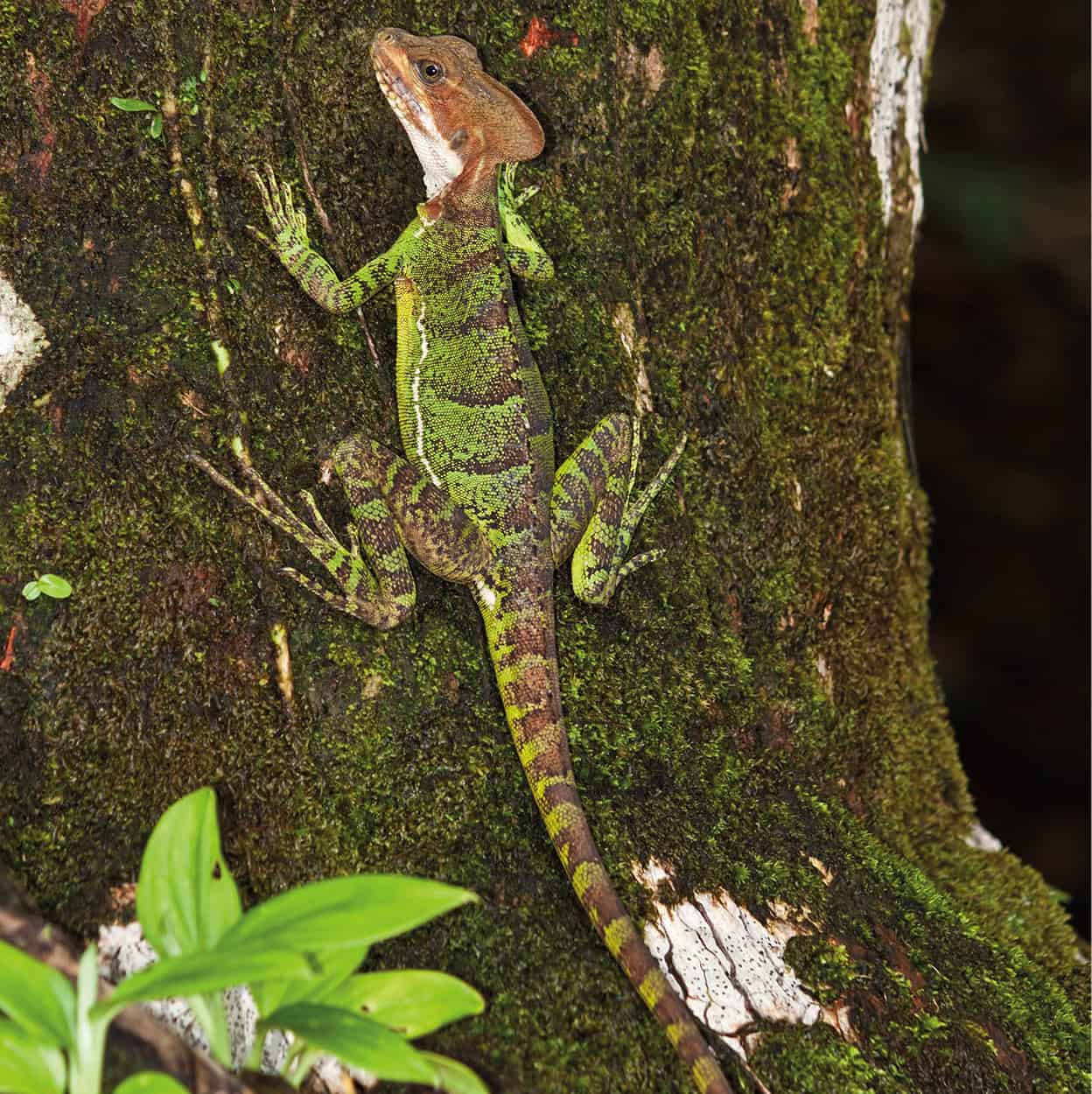
A basilisk lizard, Gorgona Islands.
Getty Images
Buenaventura and Isla Gorgona
As mentioned earlier, the southern Chocó was for many years regarded as one of the most dangerous parts of Colombia. This extended to the port city of Buenaventura 6 [map], which earned the distinction of being Colombia’s most dangerous city, a hub for drug and human trafficking. Today Buenaventura is much safer (although the trafficking trade still exists here), and a strong military presence in the area means that visitors who spend a short time here likely won’t face any real trouble. As a port it handles around 60 percent of Colombia’s total exports, so its streets are always bustling. There isn’t much to recommend in Buenaventura, and most likely travelers will be arriving here merely as a transition point for hopping one of the cargo boats up the Pacific Coast (for more information, click here).
Sadly, for a long time the danger of Buenaventura extended to Parque Nacional Natural Isla Gorgona 7 [map], an island national park in Chocó’s far south. Originally it was inhabited by indigenous groups and was first settled by the Kuna from the San Blas archipelago in Panama. The conquistador Francisco Pizarro arrived in 1528 from Peru and named the island Gorgona, after the poisonous snakes that were found here. It was these snakes, and the island’s shark-infested waters, that dissuaded inmates from escaping Gorgona when it was an island prison. In 1984, the prison was shut down.
Where
Transportation to Isla Gorgona can be reserved through Unión Temporal PNN Gorgona (tel: 321-768 0539; www.vivegorgona.com). The journey involves one boat from Buenaventura south to the town of Guapi (US$68 pp), then another boat from Guapi to the island (US$100 pp). They can also arrange flights from Cali to Guapi (US$170 pp).
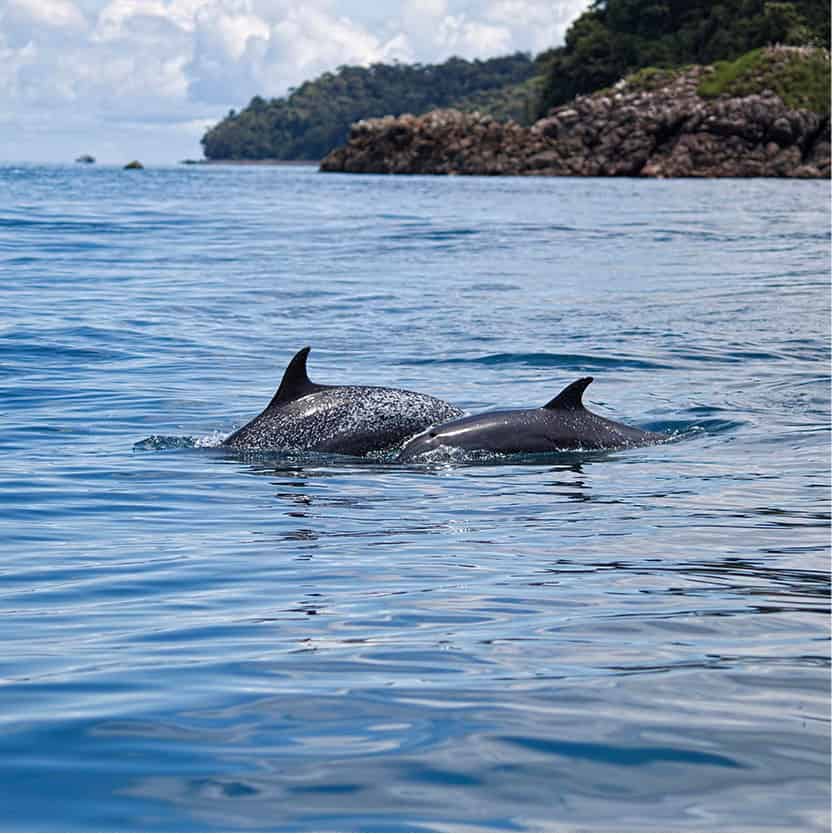
Dolphins off the Gorgona Islands.
Getty Images
Gorgona boasts some picture-perfect deserted beaches that make great vantage points for witnessing whale migration. You probably won’t get closer to the animals than by sitting on one of Isla Gorgona’s white-sand beaches and simply waiting as entire pods pass by, mere feet in front of your face. There’s also great snorkeling and diving here, but it’s best to bring your own equipment from the mainland.
Fact
Isla Gorgona is a prime destination for birders, as the park protects various species on the island, including geese, cormorants, herons, and pelicans. There’s also no shortage of monkeys and iguanas here as well.
